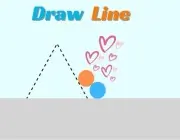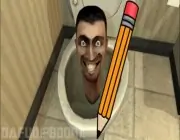As we delve deeper into the world of drawing games, we encounter a fascinating blend of artistic freedom and technological constraints. This section explores the design challenges and innovations that define drawing games, highlighting how developers navigate the complexities of creating engaging, accessible, and expressive platforms for a diverse audience.
The design of drawing games involves a unique set of challenges, primarily centered around providing a user-friendly interface that accommodates a wide range of artistic skills. Developers must create intuitive systems for beginners while offering depth and flexibility for more experienced artists. This balance is crucial in ensuring that drawing games remain accessible and enjoyable for all players, regardless of their artistic background.
One of the critical innovations in the genre has been the development of advanced drawing tools within Draw The Rest games. These tools aim to mimic the experience of drawing on physical media as closely as possible, offering a variety of brushes, colors, and textures. The challenge lies in translating the nuanced control of traditional art tools into a digital format that can be navigated with a mouse, stylus, or finger. Achieving this requires innovative programming and a deep understanding of the artistic process.
Drawing games online has also embraced collaborative features, allowing players to work on art projects together in real time. This introduces technical challenges in ensuring smooth and synchronous interactions between multiple users, but when executed well, it can significantly enhance the social and communal aspects of the game. These collaborative spaces serve as a platform for creative expression and a venue for learning and inspiration as players observe and build upon each other's work.
The genre of games with drawing and guessing presents its design considerations, focusing on facilitating communication through art. Developers must devise systems that allow quick and easy drawing and thinking within a limited timeframe, making the game fast-paced and engaging. This often involves simplifying the drawing of the face and optimizing the game flow to keep players engaged and ensure that the focus remains on the fun and challenge of visual communication.
Accessibility is another critical aspect of drawing game design. Developers strive to make these games as inclusive as possible, incorporating features that accommodate players with different abilities and preferences. This includes options for colorblind modes, adjustable controls, and alternative input methods, ensuring everyone can participate and enjoy the creative process.
In conclusion, the design and development of drawing games involves a delicate balance of creativity, technology, and user experience. By addressing the challenges of representation, tool simulation, collaboration, and accessibility, developers can create fun, educational, inclusive, and empowering games. As technology advances, player expectations evolve, and drawing games will continue to innovate, offering new ways for people to express themselves, connect with others, and explore the boundless possibilities of digital art.
Play free drawing News games | crazygamesonline
© Copyright 2020 CrazyGamesOnline.com






















































